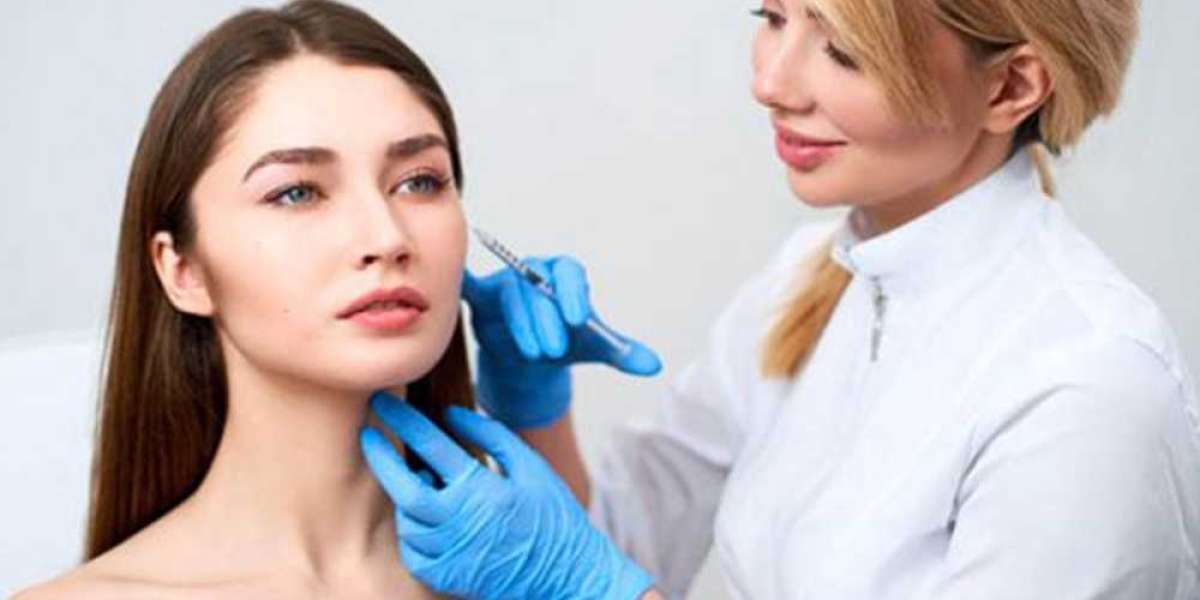Dermal fillers are also becoming popular among Islamabad and internationally individuals to rejuvenate the face, eliminate the signs of aging, or reshape facial features. Dermal fillers are injectable materials that smoothen wrinkles, re-puff the face, and provide support to cheeks or lips, providing a non-surgical solution to cosmetic issues. Though Dermal Fillers Injections in Islamabad are harmless in the hands of a professional doctor, there are some complications and side effects one needs to document before taking up the treatment.
Common Dermal Fillers:
A description of common dermal fillers must be provided prior to the description of risks.
Hyaluronic acid (HA) fillers, calcium hydroxylapatite (CaHA) fillers, poly-L-lactic acid (PLLA) fillers, and autologous fat injections are the most common dermal fillers found in Islamabad. All of them function with varied mechanisms but are all useful in substituting the volume of the face, ironing out wrinkles, or redrawing new contours. The most used among these is hyaluronic acid because it is a naturally occurring substance in the human body and hence safe and reversible in the event of a complication.
Risks and Side Effects:
Swelling and Bruising:
Swelling and bruising on the site of injection are two of the most common side effects of dermal filler injections.
This is due to the fact that the needle has entered the skin and due to the natural inflammatory response of the body. Swelling lasts from a few days to a week, and bruising lasts a bit longer to clear up, depending on the sensitivity of the individual's skin as well as on the area treated. While it is a temporary condition, it can be observed, particularly if the treatment was administered on very exposed areas such as the cheeks or the lips. Infection
Similar to any therapy where entry into the skin is made, infection is possible.
Infection is not intended to happen, but infection will happen if the therapy is not well cleaned before injection or through poor aftercare. Redness, swelling, pain, and pus show infection. If infection is not treated, there will be scarring or complication. To avoid this, one must go to a good clinic of Islamabad with hygienically attired staff after following standard hygienic precautions. Allergic Reactions
Though uncommon, an allergic reaction to dermal fillers can occur.
Symptoms are swelling, itching, redness, or rash at the injection site. Hyaluronic acid fillers are generally safe for patients as the body naturally contains hyaluronic acid. The other fillers such as collagen or animal tissue-derived fillers do, however, lead to allergic reactions in some patients. It is advisable to provide your medical history to the practitioner and undergo an allergy test if necessary before treatment.
Lumps and Irregularities:
Redness, swelling, or roughness of the skin may occasionally occur after injections of dermal fillers.
These bumps are likely the result of irregular placement of the filler or overfilling the skin with the filler. Massage of the bumps or some maneuver can be successful some times, but some times additional treatment has to be done to rectify the problem. This indicates the need for choosing an experienced and expert injector in an effort to prevent such a complication. Vascular Complications
Although extremely uncommon, dermal filler injections do have vascular complications.
When a filler is inadvertently injected into a vessel, it will cause the blood flow to be obstructed, and tissue necrosis or cells of the skin are killed. In extremely rare situations, it will create scarring or damage to the skin that is irreversible. Temporary vision problems also result in some patients if the filler embolizes the eyes. To prevent such issues, it is important that the procedure be carried out by an expert because they are in a position to try and prevent injecting fillers into larger vessels.
Migration of Filler:
In other cases, the filler material can move from the site where it was originally injected to other parts of the face or body. Migration causes asymmetry or unappealing changes in the appearance of the treated area. To reduce migration, one should not massage or press the area after the injection has been administered and follow all aftercare instructions provided by the clinic.
Overcorrection:
A good doctor knows how much to fill in to achieve the natural appearance. But too much filler is put in the patient sometimes, and overcorrection occurs. The plumping is too much or unnatural, and this is very obvious on the cheeks or lips. Overcorrection can be corrected by breaking the filler using an enzyme known as hyaluronidase, but that takes additional treatment and time.
Conclusion:
Although dermal fillers are a secure and successful facial rejuvenation treatment, they also pose risks.
There are more chances of the following risks arising as a result of the injection of dermal fillers: infection, swelling, bruising, allergic reaction, lumping, and vascular complications, for which some patients in Islamabad may have to be alerted before making the decision to opt for the treatment. Minimization of risk is achievable through injection by a skilled practitioner with protective measures. Based on this information of the potential risk and protective measures, people can make informed decisions and achieve the advantage of dermal fillers injection without a labyrinth of complications.











